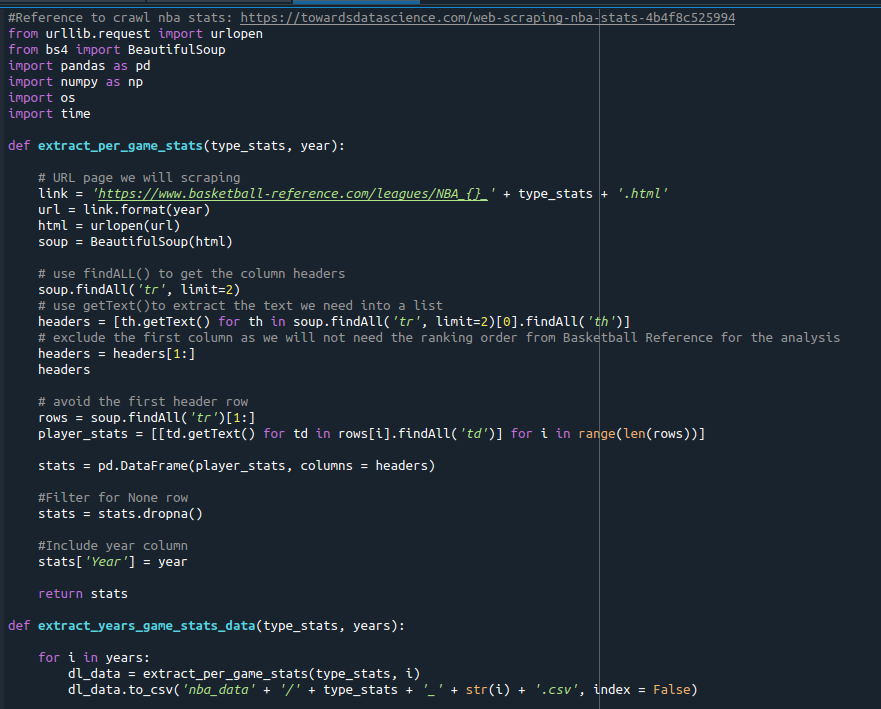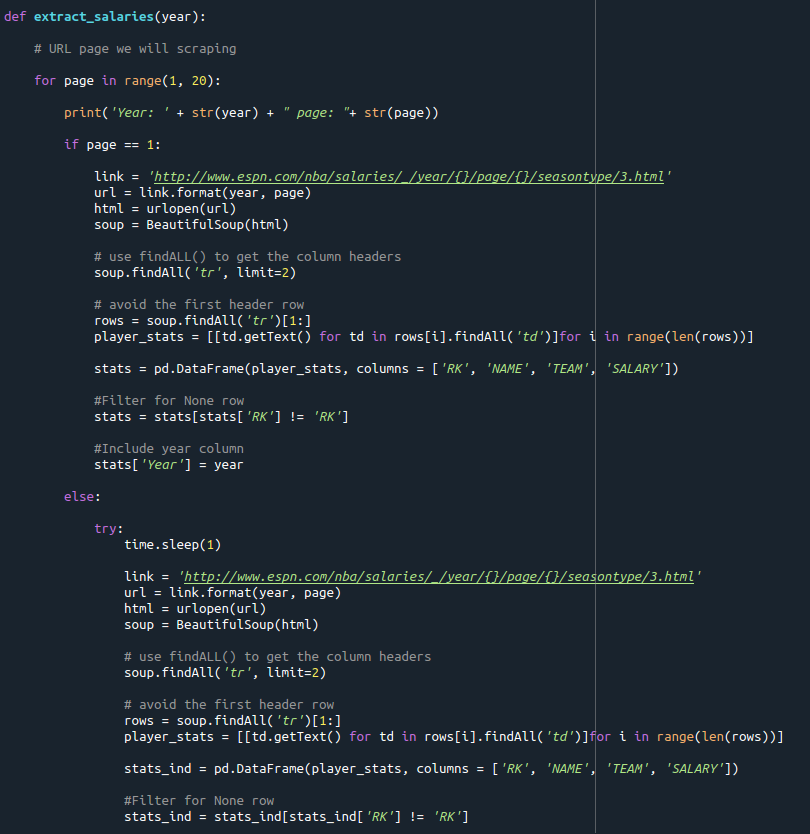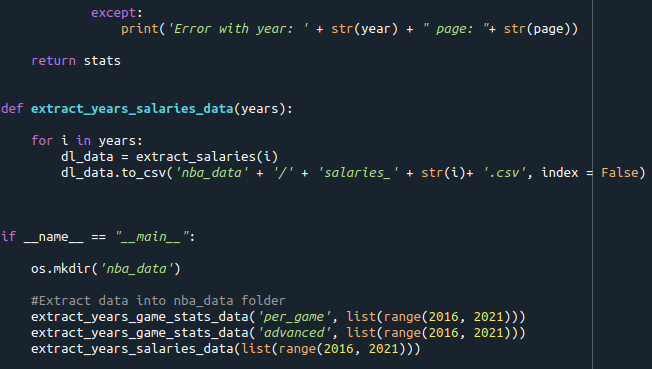Crawling data from basketball-reference and espn
As I required some data for my ML assignment, I thought that predicting NBA player salaries based on previous seasons’ game stats would be cool.
Here’re the codes used for crawling the data from basektball-reference and espn.
Codes


